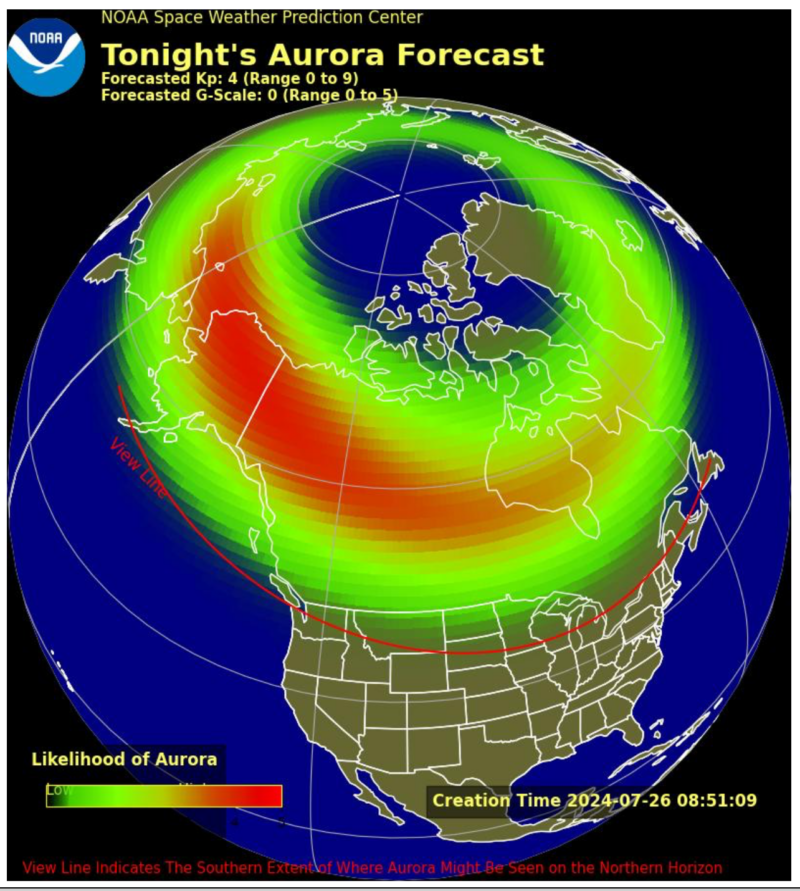
Sun news July 26: Geomagnetic storming earlier, more tonight
Today’s top story: A coronal mass ejection (CME), or chunk of solar material, reached Earth earlier today, causing a G1 (minor) geomagnetic storm. The Kp=5 storm threshold was reached at 5:41 UTC this morning. And there’s more to come; further G1 storming is anticipated overnight with the arrival of solar material that left the sun on July 23. Aurora chasers, keep an eye out!
Last 24 hours: The Solar Orbiter’s STIX X-ray telescope, now located almost directly on the far side of our sun, has been observing some big activity. It recorded flares that might have been as large as X7 and X1. The X7 flare was what produced the halo CME we saw blasting from the far side yesterday. The regions that produced these big events will be rotating into our view in the next few days, so excitement could be on its way! Back to the Earth-facing side of the sun, solar activity remains moderate due to two M flares fired over the past day. It’s slightly surprising we’ve not seen more intense flaring, given that sunspot region AR3762 has a high potential beta-gamma-delta magnetic configuration, and a couple more regions have gamma-beta complexities. Between 11 UTC yesterday and 11 UTC today, our star released 19 flares: two Ms and 17 C flares. The first M was an M1.3 flare at 15:37 UTC on July 25 from AR3751. An R1 (minor) radio blackout was observed affecting an area over the Atlantic Ocean south of Bermuda. The second M was the largest flare of the period, an M1.7 flare at 4:42 UTC on July 26 from AR34761. It caused an R1 (minor) radio blackout over Hainan in China. The lead flare producer title for the period was AR3761 with six flares: an M and five Cs. The sun currently has nine numbered active regions, with a newcomer in the southeast: AR3767.
Next 24 hours: The chance for C flares is 99%. The chance for M flares is 60%. The chance for X flares is 10%.
Next expected CME: Coronal mass ejections (CMEs) were observed arising from AR3762’s C flares. Solar ejecta from these events will likely reach us at Earth by July 29. No additional Earth-directed CMEs were observed in the available imagery.
Current geomagnetic activity: Earth’s magnetic field is active at the time of this writing (11 UTC on July 26). The anticipated coronal mass ejection (CME) arrived early, but did not bring much disturbance immediately. However, a G1 (minor) geomagnetic storm occurred this morning. More isolated active periods could continue today as any CME influences wane. Quiet conditions are expected to persist through to this evening, when unsettled-to-active levels are expected with any shock arrival from an event on the east limb on July 23. A G1 (minor) geomagnetic storm is likely overnight, caused by glancing effects from the CME produced by AR3751 on July 23. Quiet to unsettled levels are expected to prevail on July 28 as any lingering CME effects wane.

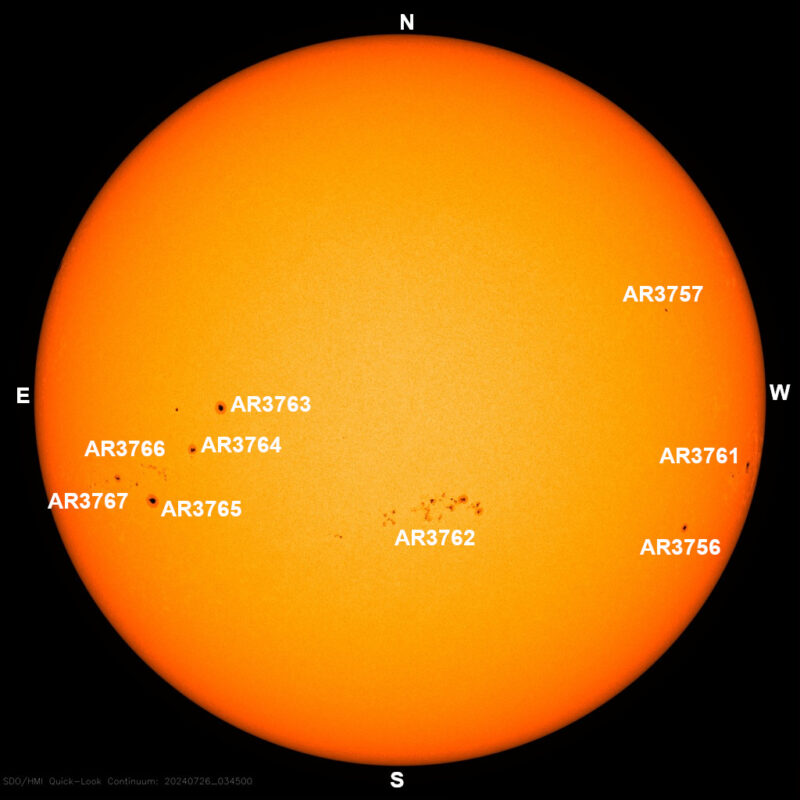
Sun news July 25: Solar deja vu, but action incoming
Welcome to solar maximum. Sometimes, during the peak of a solar cycle, we see days or even weeks of large flares and many Earth-directed coronal mass ejections (CMEs). And at other times, we have days to weeks when the sun is active but only produces moderate flaring, with few CMEs sent our way. This is where we are now! The sun today looks largely like it did yesterday, with only an M flare and a single Earth-glancing CME to report. But a high activity period could be on the way. We’re seeing lots of action coming from the sun’s far side; a few days ago, an active region produced an X17 flare, which would have been the largest recorded in the last two solar cycles if we had observed it. And just today, another halo CME and other far-sided eruptions were observed coming from the far side. These regions will soon rotate into view. So could we be in for a spell of major activity? Stay tuned.
Last 24 hours: During the past day, solar activity remained moderate after an isolated M flare. However, flaring production increased: between 11 UTC yesterday and 11 UTC today our star released 19 flares (an M and 18 C flares), compared to seven the day before. The largest flare of the past day was an M3.0 flare at 17:21 UTC on July 24 from active region AR3751. An R1 (minor) radio blackout was observed affecting an area over the United States. Active region AR3762 kept its beta-gamma-delta magnetic configuration, meaning it has a higher potential for M and X flares. The focal region of the week, AR3751, is now located at the very edge of the solar limb (edge) in the southwest. The region has lost its delta configuration, and now has a lower potential beta-gamma configuration. However, its location on the limb makes it difficult to analyze. The lead flare producer of the period was AR3762, which blasted out eight C flares. The sun currently has 10 numbered active regions, with a newcomer in the southeast: AR3766.
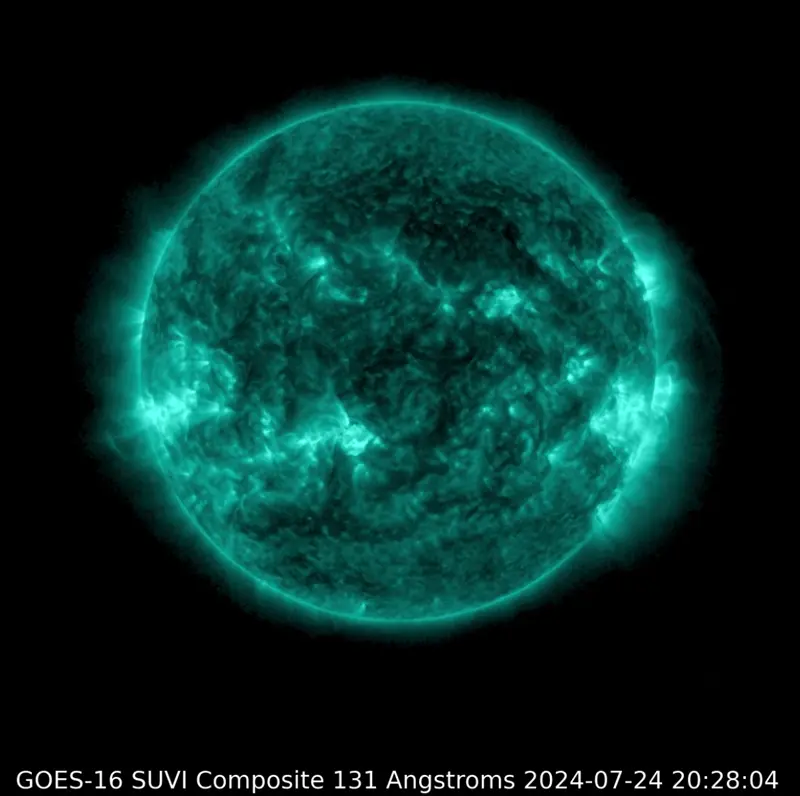
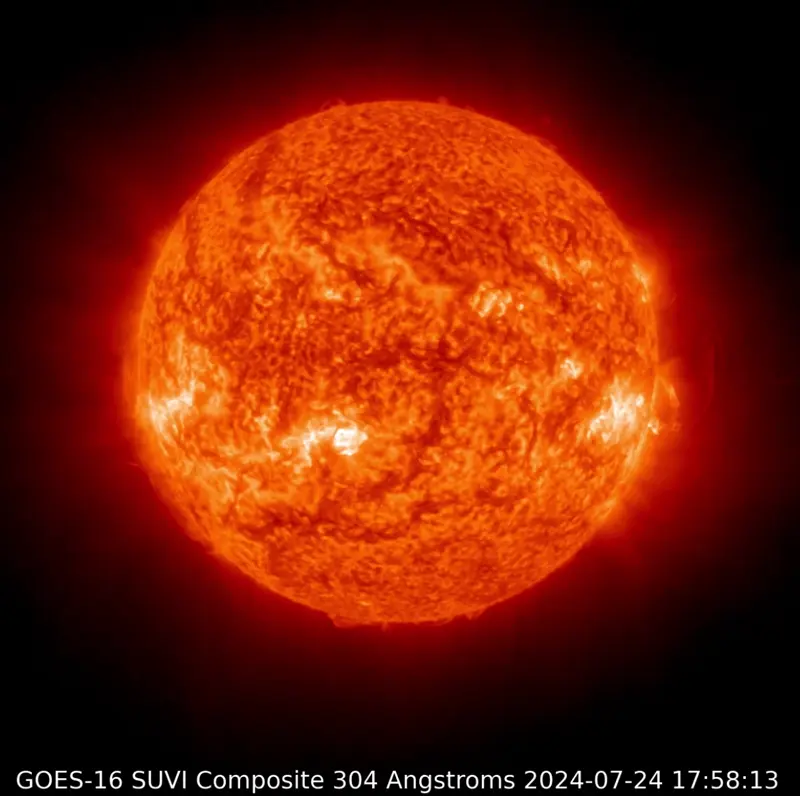
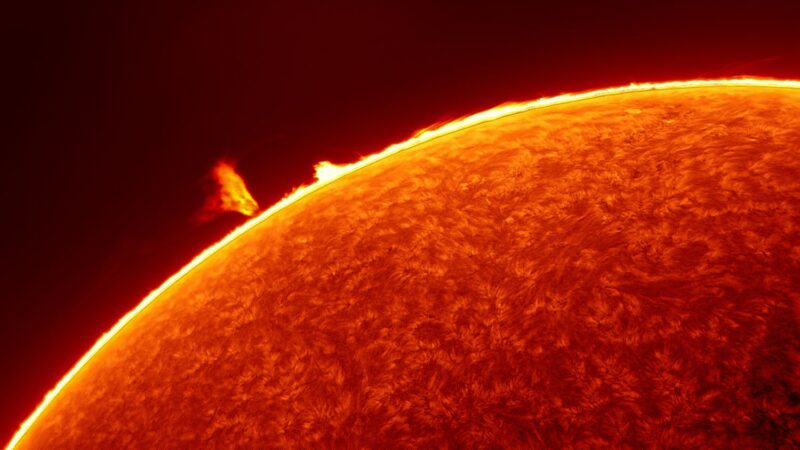
Sun news July 24: Sun activity moderate with two M flares
Sun activity is now moderate, with the production of two M flares over the past day. The proton storm from yesterday’s huge far-side eruption continues, but it has begun to subside. The weak halo coronal mass ejection (CME) from July 21 has reached Earth, but no obvious magnetic disturbance has been observed.
Last 24 hours: Overall, today’s sun activity remains moderate, but two regions have a beta-gamma-delta magnetic configuration, meaning they have a higher potential for M and X flares. So even another average day on an active star could become more exciting at any moment. Meanwhile, between 11 UTC yesterday and 11 UTC today, the sun produced two M flares and seven C flares. The largest flare was an M3.6 flare from active region AR3751 at 7:42 UTC on July 24. An R1 (minor) radio blackout affected area over the northeast of India. The second M flare of the period was an M2.5 flare from AR3765 on July 23 at 14:28 UTC. The corresponding R1 (minor) radio blackout affected an area over the middle of the Atlantic Ocean. The lead flare producer of the period was sunspot region AR3751, with an M flare and three Cs. AR3765 and AR3762 had two flares each. Active regions AR3751 and AR3762 kept their beta-gamma-delta magnetic complexity. Sunspot AR3761 kept its beta-gamma. The remaining regions have simple alpha or beta magnetic complexity. The sun has nine numbered active regions. There is a newcomer in the southeast, AR3765.
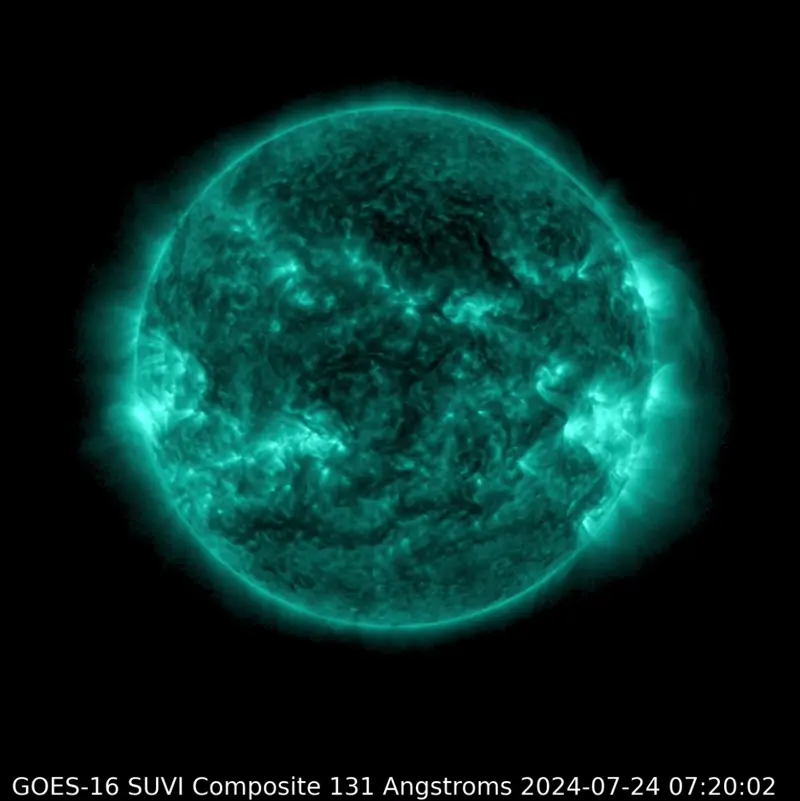
Sun news July 23: An X14 flare on sun’s far side this morning?
Something big and powerful is causing a ruckus on the sun’s far side. Around 0 UTC this morning (July 23), a large farside eruption caused a huge halo CME (see the image above). That’s when a coronal mass ejection (CME) is situated on the sun so that an expanding cloud of solar material and magnetic fields looms larger and larger, forming a “halo” around our star as seen from Earth. And experts are now estimating that this particular event might have started with an X14 flare! Halo CMEs often mean there’s a CME headed toward Earth. This CME is not headed our way, but, if it had been, it night have caused a dazzling (and perhaps scary) geomagnetic event, such as the one of October 28, 2003. And the event did accelerate high-energy protons that did reach Earth this morning. Particles from the sun’s far side, just over the sun’s western limb (edge), can travel back around to the Earth-facing side of the sun. The STIX X-ray monitor on the Solar Orbiter spacecraft observed the event that resulted from this halo eruption. STIX measured the X-ray flux and estimated the associated flare to be an X14. We await any additional data that might inform us of the speed of the eruption, but – to say the least – the incoming protons indicated it was a quite substantial eruption. If it had been Earth-directed (which it’s not), it would have caused severe to extreme geomagnetic activity. Meanwhile, the coronal mass ejection (dark fan-like filament eruption) we reported yesterday did stem from a CME that’s now headed our way. It could bring up to a G2 (moderate) geomagnetic storm and auroras tomorrow.
Last 24 hours: In the past day, solar activity has been moderate, with one M flare. Between 11 UTC yesterday and 11 UTC today, we saw solar activity on the sun’s near side reduce from 31 flares yesterday to nine flares today: an M flare and eight C flares. The largest flare was an M1.5 on July 22 at 13 UTC from AR3744. An R1 (minor) radio blackout affected an area over the Atlantic Ocean off the west coast of Africa. Following this M flare, another flare that narrowly missed becoming an M (C9.0) came from AR3762 at 15:26 UTC on July 22. The lead flare producer of the period was sunspot region AR3762 with three flares. Today the sun has two active regions showing a beta-gamma-delta magnetic complexity: AR3751 and AR3762. Sunspot AR3761 kept its magnetic complexity at a beta-gamma level. The southwest quadrant has the two largest sunspot regions in size. The remaining regions have simple alpha or beta magnetic complexity. The sun has nine numbered active regions.

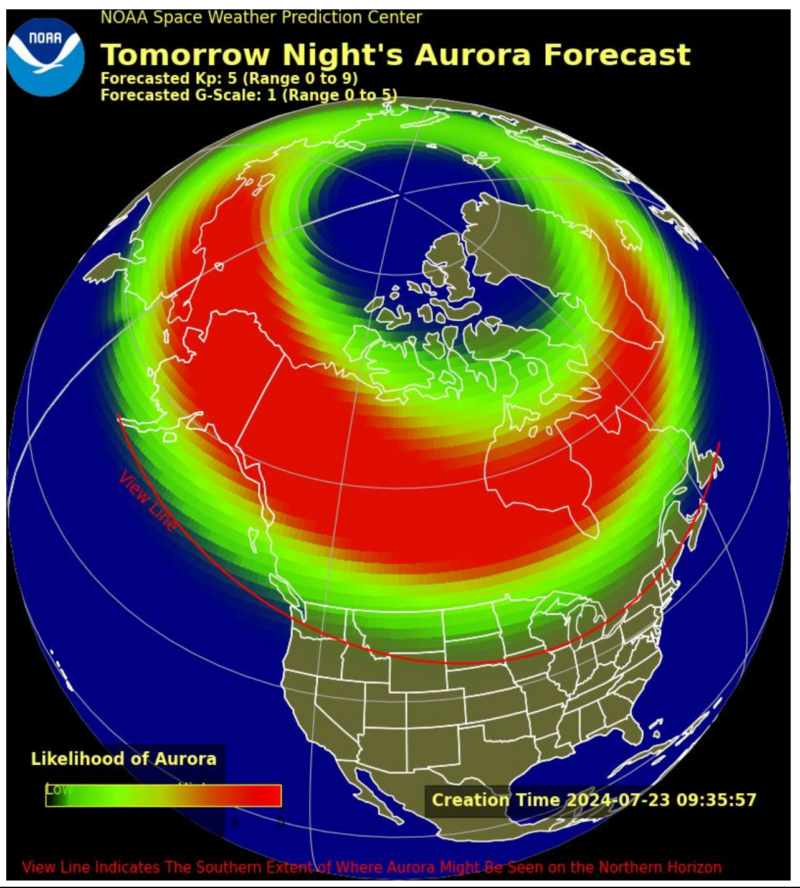
Sun news July 22: See a spray of dark plasma
Maybe you know that sunspots appear dark on the sun’s surface because they are relatively cool? If you could remove dark sunspots from the blazingly hot sun, they’d be seen to shine brightly. Likewise, the blast of solar plasma that left the sun around 16 UTC yesterday (July 21) was a relatively “chilly” (20,000 degrees C or 36,000 F) compared to the “warm” (80,000 degrees C or 144,000 F) solar atmosphere behind it. So it looked dark. It happened when a filament sitting across sunspot region AR3757 erupted, producing an M1 flare and the dark fanlike jet of cool sun stuff, which shot northward. Interesting to see!
Last 24 hours: Solar activity in the past day continued at moderate levels with the production of six M flares. During our observation period (11 UTC yesterday to 11 UTC today), our sun produced 31 flares: the six M flares and 25 C flares. The largest flare was an M4.0 on July 22 at 03:55 UTC from AR3762. An R1 (minor) radio blackout affected an area over eastern Asia. The lead flare producer was sunspot region AR3751, with 12 flares. It produced three M flares and nine C flares. The breakdown of M flares is:
• M1.0 on July 22 at 16:18 UTC from AR3757. R1 (minor) radio blackout over the Americas.
• M3.2 on July 21 at 23:21 UTC from AR3744. R1 (minor) radio blackout over the Pacific Ocean.
• M1.4 on July 22 at 03:27 UTC from AR3762. R1 (minor) radio blackout over eastern Asia.
• M4.0 on July 22 at 03:55 UTC from AR3762. R1 (minor) radio blackout over eastern Asia.
• M1.9 on July 22 at 04:14 UTC from AR3762. R1 (minor) radio blackout over eastern Asia.
• M1.5 on July 22 at 09:31 UTC from AR3744. R1 (minor) radio blackout over the Middle East.
Active region AR3751 kept its beta-gamma magnetic complexity. The greater the magnetic complexity, the greater the potential for strong flaring. AR3751 is no longer the largest active region on the sun’s visible face. AR3761 maintained its beta-gamma complexity and is now the largest region on the disk. The remaining regions have simple alpha or beta magnetic complexity. The sun has nine numbered active regions. A filament erupted northward from AR3757 around 16 UTC on July 21, creating a dark fan-like spray structure because the solar plasma was cooler than the background sun. A coronal mass ejection (CME) was observed in SOHO LASCO around 16:48 UTC. The event is under analysis to determine any Earth-directed component.
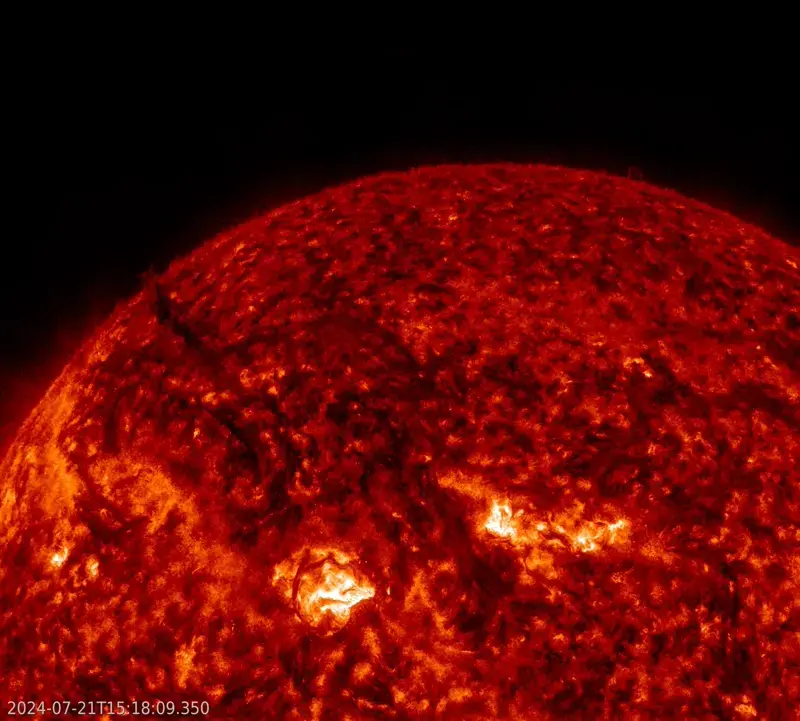
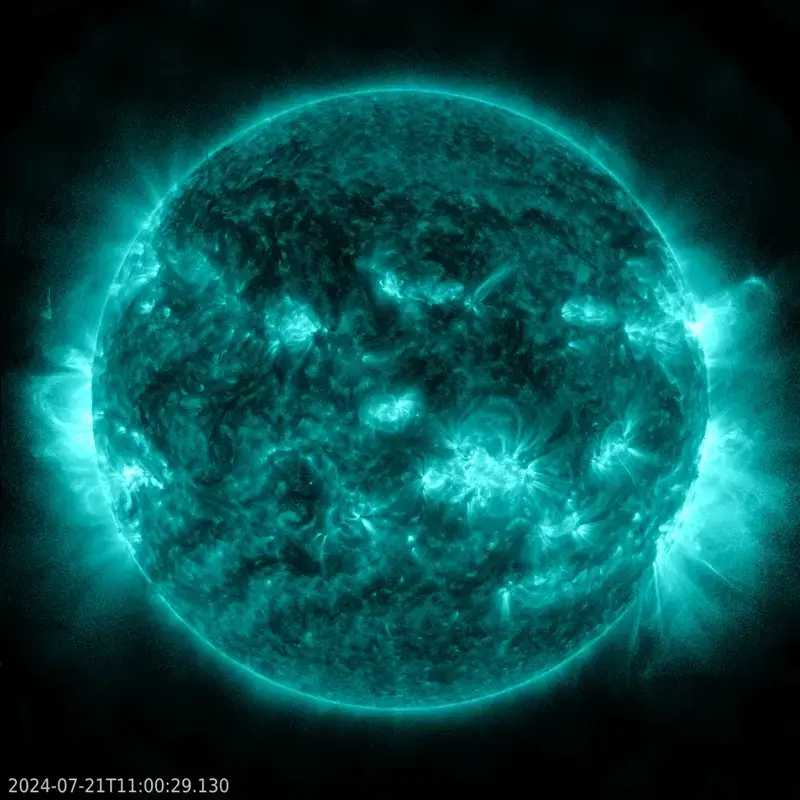
Sun news July 21: Here’s an average day on an active sun
Happy SUNday! It’s an average day on our active sun, now at or near Solar Maximum, the peak of the 11-year sunspot cycle. Flaring levels have been moderate over the past day, with three M flares. The disk and limb (edge) are covered with prominences and filaments. A few have erupted, but none of them are Earth-directed. Even with this “ordinary” day, looking at the sun in 304- and 171-angstrom light from the sun-observing GOES-16 and SDO spacecraft, the signs of Solar Maximum are all around (see the image below). We can see huge magnetic loops off the limb (edge) indicative of powerful magnetic fields from sunspots. Small flashes all over the disk illuminate solar flares from small to moderate sizes (C and M flares, respectively.) Bright areas on the solar disk show active regions—the superhot coronal atmosphere sitting overtop of sunspots. And we’re currently in a SDO “Earth eclipse” season, so we’re also seeing quick moments of darkness due to Earth’s moving temporarily between SDO and the sun. Our favorite star always amazes!
Last 24 hours: Solar activity in the past day continued at moderate levels with the production of three M flares. During our observation period (11 UTC yesterday to 11 UTC today), our sun produced 23 flares: the three M flares and 20 C flares. The largest flare was an M1.6 on July 20 at 18:36 UTC from AR3744. An R1 (minor) radio blackout affected an area over the United States. The lead flare producer was sunspot region AR3751, with eleven flares. It produced one of the M flares and ten C flares. The breakdown of M flares is:
• M1.6 on July 20 at 18:36 UTC from AR3744. R1 (minor) radio blackout over the United States.
• M1.0 on July 21 at 03:46 UTC from AR3744. R1 (minor) radio blackout over Eastern Asia.
• M1.8 on July 21 at 08:26 UTC from AR3751. R1 (minor) radio blackout over the Middle East.
Active region AR3751 kept its beta-gamma magnetic complexity. The greater the magnetic complexity, the greater the potential for strong flaring. AR3751 remains the largest active region on the sun’s visible face. AR3761 increased its complexity to beta-gamma. The remaining regions have simple alpha or beta magnetic complexity. The sun has 12 numbered active regions. A small filament erupted from the northeast around 15:00 UTC on July 20 and another filament lifted off from the north pole around 17 UTC on July 20. Neither created an Earth-directed CME.

Sun news July 20: Huge blob of sun stuff erupts
A huge filament erupted from the sun at around 18 UTC on July 19. The eruption hurled a massive amount of solar stuff into space. The eruption occurred south of AR3751 and just after the M2 flare from the region. Solar activity remains at moderate levels with the production of three M flares. The number of sunspot regions decreased from the record number of 18 yesterday to only 13 today. Stay tuned for more sun news.
Last 24 hours: Solar activity in the past day continued at moderate levels with the production of three M flares. During our observation period (11 UTC yesterday to 11 UTC today), our sun produced 15 flares: the three M flares and 12 C flares. The largest flare was an M2.0 on July 19 at 18:06 UTC from AR3751. An R1 (minor) radio blackout affected an area over Campeche in Mexico. The lead flare producer was sunspot region AR3751, with seven flares. It produced two of the M flares of the period plus five C flares. The breakdown of M flares is:
• M2.0 on July 19 at 18:06 UTC from AR3751. R1 (minor) radio blackout over Campeche in Mexico.
• M1.0 on July 19 at 22:51 UTC from AR3758. R1 (minor) radio blackout over the Pacific Ocean off the west coast of Hawaii.
• M1.8 on July 20 at 07:20 UTC from AR3751. R1 (minor) radio blackout off the west coast of India.
Active region AR3751 kept its beta-gamma magnetic complexities. The greater the magnetic complexity, the greater the potential for strong flaring. AR3751 is also the largest active region on the sun’s visible face. The rest of the regions have simpler alpha or beta magnetic complexities. The sun has 13 numbered active regions.


Sun news July 19: Most sunspots of Solar Cycle 25 so far!
Big news on the sun today. Our star now has 18 numbered sunspot regions, the largest number of regions of Solar Cycle 25 so far. Yesterday we saw an impressive 17 sunspot regions on the sun’s face, which matched the previous record for sunspot number, seen in April 2024. May 2024 had the highest monthly average sunspot number of the solar cycle, 171.7. And today we have the most visible spots on the sun’s face for a single day. Surely, the peak of Solar Cycle 25 is near, or here! Stay tuned for more sun news.
Last 24 hours: An isolated M flare kept sun activity at moderate during the last 24 hours (11 UTC yesterday to 11 UTC today). Our star produced a total of 12 flares: an M flare and 11 C flares. The largest flare was an M3.2 flare earlier today, at 8:23 UTC on July 19, from AR3753. It caused an R1 (minor) radio blackout over Oman. The lead flare producer of the period was sunspot region AR3751 with six C flares. Active regions AR3743 and AR3751 have beta-gamma magnetic complexities. The greater the magnetic complexity, the greater the potential for strong flaring. AR3751 is now the largest active region on the sun’s visible face. The remaining regions have simpler alpha or beta magnetic complexities. The sun has 18 numbered active regions today, the largest number for Solar Cycle 25 so far. The disk has a single newcomer: AR3760.
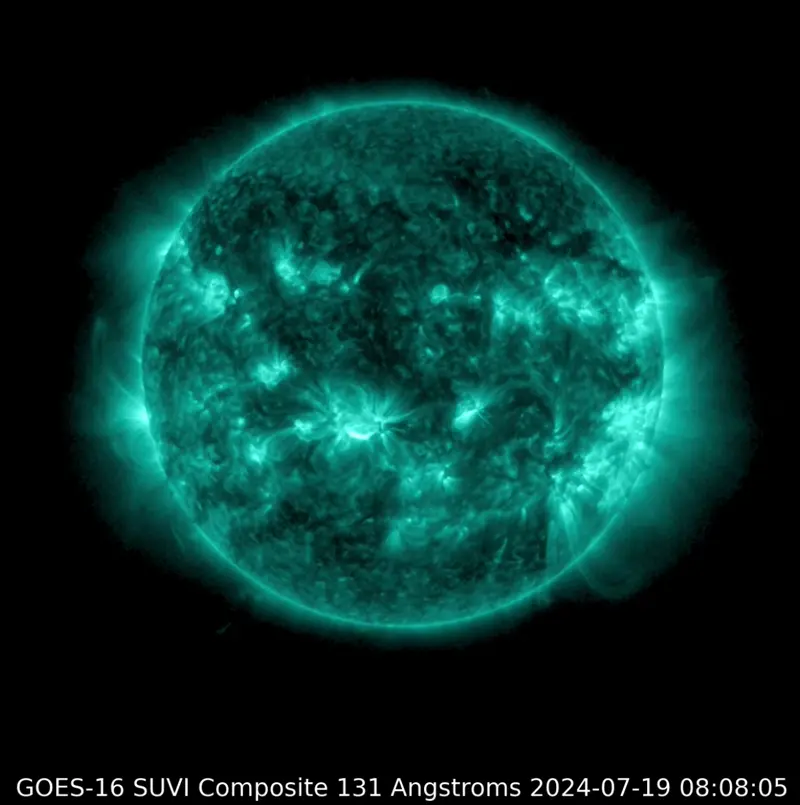
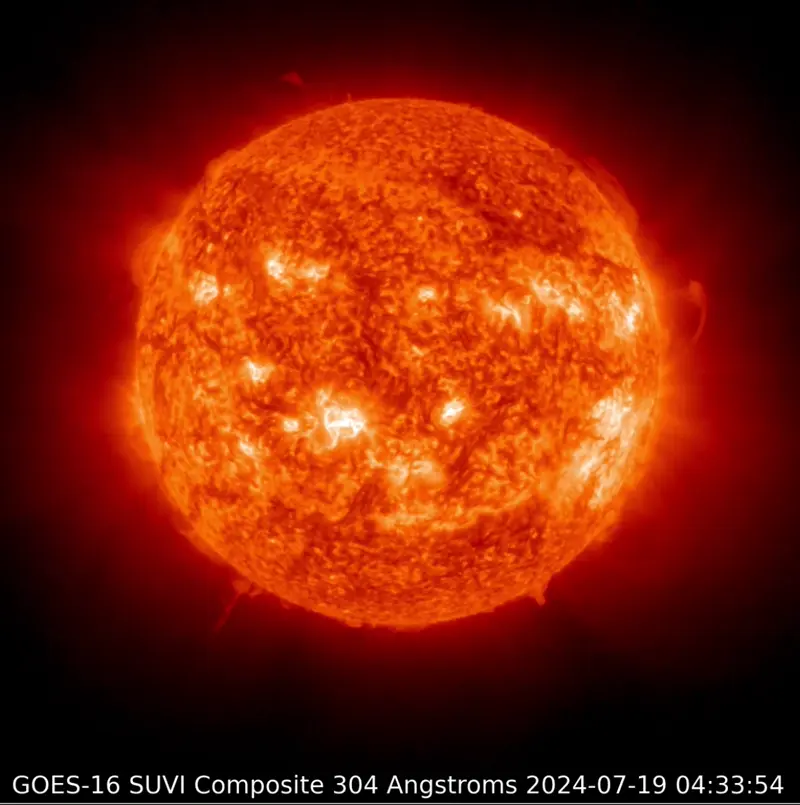
Sun news July 18: Huge prominence, sunspot groups everywhere
Wow! A stunning, incredibly long prominence erupted from the sun’s southeast limb (edge) last night. This rope of solar material and magnetic fields extended more than 500,000 km (310,000 mi) from the solar surface. The rest of the sun couldn’t live up to this excitement, with four small M flares over the past day failing to live up to the previous day’s X flare. But our star currently has an impressive 17 sunspot regions on its Earth-facing side – the joint-most we’ve seen in Solar Cycle 25 so far – so it’s primed for more activity!
Last 24 hours: Sun activity has dropped to moderate, with four M flares. Between 11 UTC yesterday and 11 UTC today, the sun produced 20 flares: four M flares and 16 C flares. Two of the M flares came from AR3753; the first was an M1.2 flare on July 17 at 19:51 UTC, and the second an M2 shortly after at 19:58 UTC. Each of the first two flares caused an R1 (minor) radio blackout over the Pacific Ocean off the west coast of Baja in Mexico. The largest flare of the period was an M2.2 flare on July 18 at 10:04 UTC from AR3751. It produced an R1 (minor) radio blackout over Africa. Just after that, at 10:27 UTC, this same sunspot produced its second M flare of the period, an M2.0. The lead flare producer of the period was AR3751, which blasted out 11 flares: two Ms and nine Cs. Sunspot region AR3738 just rotated over the southwest limb (edge). It is estimated to still have a beta-gamma-delta magnetic complexity with potential for more M flares and even another X flare. Active regions AR3743 and AR3751 show beta-gamma configurations, and AR3751 is now the largest active region on the sun. The sun has 17 numbered active regions, the largest amount yet during Solar Cycle 25, including two newcomers: AR3758 and AR3759.
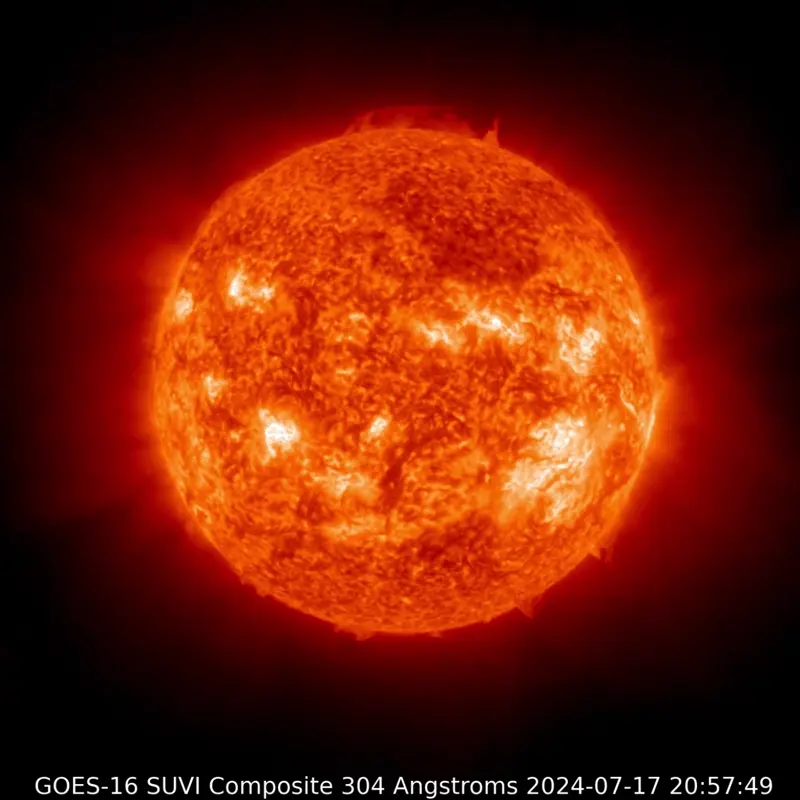
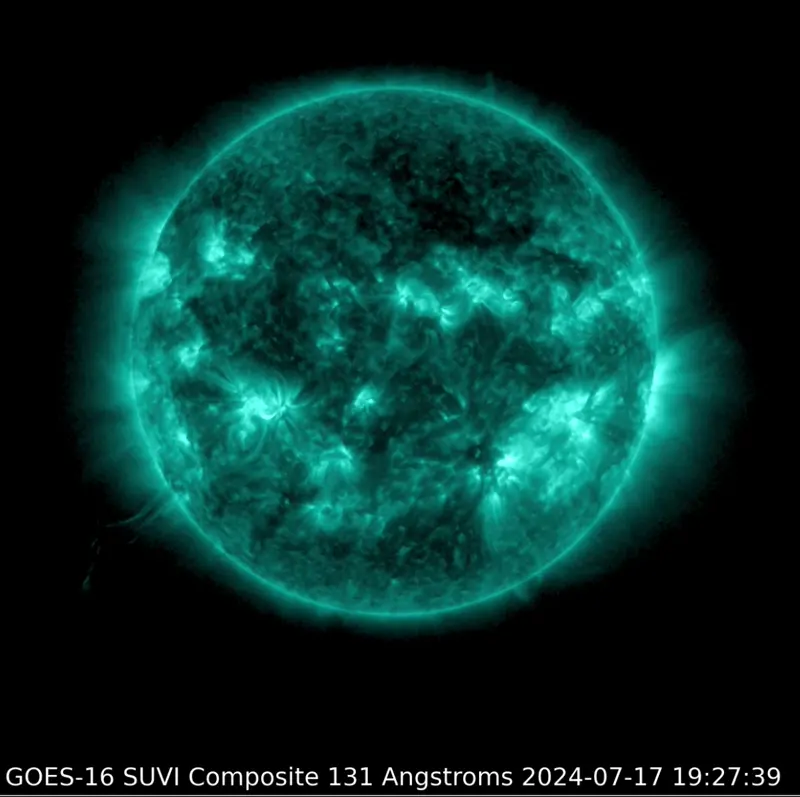
Sun news July 17: AR3738 fires an X flare!
BAM, X flare! Just as it approached the western limb (edge) to begin passing out of view, AR3738 blasted an X1.9 flare yesterday afternoon. The eruption sent out a bubble of sun-stuff – a coronal mass ejection (CME) – toward the west. It doesn’t look like this is heading toward Earth, but we’ll wait to hear from the space weather analysts. Does AR3738 have any more big eruptions in store from us, even from over the solar horizon? The chance for X flares is 25% today, so let’s see!
Last 24 hours: Sun activity is high after the X flare. In the past 24 hours the sun produced 14 flares: an X flare, four M flares, and nine C flares. The largest flare produced between 11 UTC yesterday and 11 UTC today was the X1.9 flare from AR3738 at 13:26 UTC on July 16. An R3 (strong) radio blackout affected an area over the Atlantic Ocean. AR3743 was the lead flare producer of the period, with two C flares and two of the M flares. Here are the X and M flares of the period:
• X1.9 on July 16 at 13:26 UTC from AR3738 – R3 (strong) radio blackout over the Atlantic Ocean.
• M1.6 – July 16, 21:24 UTC from AR3753 – R1 (minor) radio blackout over the Pacific Ocean off the east coast of Hawaii.
• M1.9 – July 16, 22:06 UTC from AR3744 – R1 (minor) radio blackout over Hawaii.
• M5.1 – July 17, 06:39 UTC from AR3743 – R1 (minor) radio blackout over northeast India.
• M3.4 – July 17, 07:08 UTC from AR3743 – R1 (minor) radio blackout over northwest India.
Just after releasing an X flare, AR3738 rotated over the southwest limb (edge). It is estimated to still have its high-potential beta-gamma-delta magnetic complexity. AR3751 kept its beta-gamma configuration, and is now the largest active region on the Earth-facing side of the sun. The sun has 15 numbered active regions, including three newcomers: AR3755, AR3756 and AR3757.

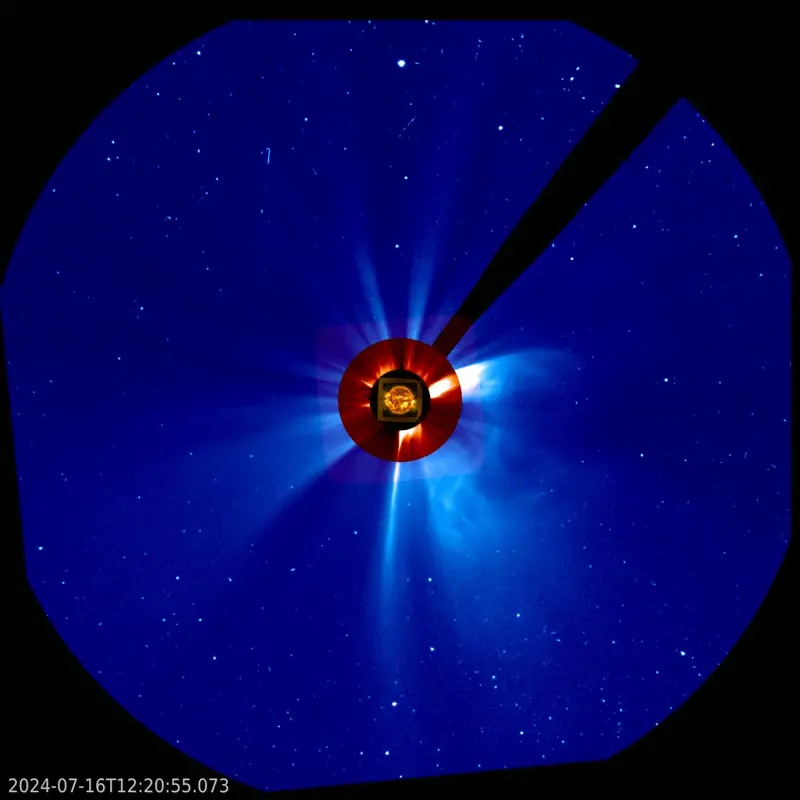
Sun news July 16: See this solar plasma jet from the sun
A beautiful jet and large coronal hole caught our attention earlier today. The sun sprayed solar plasma off its eastern limb. See the image above. Meanwhile, solar wind from the coronal hole in the sun’s northern hemisphere on its central meridian should disturb Earth’s magnetic field beginning on July 17. See more about that under “current geomagnetic activity,” below.
Last 24 hours: Solar activity has continued at moderate levels in the past 24 hours, with two M flares. The largest flare of the observation period happened between 11 UTC yesterday and 11 UTC today. It was an M3 flare at 7:37 UTC on July 16. An R1 (minor) radio blackout affected an area over Pakistan. The sun released 12 flares, two M flares, and 10 C flares. AR3751 is the lead flare producer of the period. It produced four C flares. This is the breakdown of the M flares of the period:
• M1.4 on July 16 at 03:01 UTC from AR3744 with an R1 (minor) radio blackout over the Philippine Sea.
• M3.6 on July 16 at 7:37 UTC from AR3753 with an R1 (minor) radio blackout over Pakistan.
AR3738 kept its beta-gamma-delta magnetic complexity. After the region’s X flare and large M flares earlier this week, its flare production was low, as it prepares to leave the building, that is, rotate over the sun’s western limb (edge). Meanwhile, AR3751 developed a beta-gamma configuration. A new coronal hole emerged, now located centrally in the sun’s north hemisphere. The sun has 12 numbered active regions. There are two newcomers: AR3753 and AR3754.



Sun news July 15: SDO eclipse season begins today
Interesting sun news today! The Solar Dynamics Observatory (SDO) enters its 29th eclipse season. The spacecraft’s inclined geosynchronous orbit around Earth is designed to maximize its time looking at the sun. Still, each year, the spacecraft must experience two periods – lasting 3–4 weeks each – where Earth blocks the sun periodically from the spacecraft’s point of view. The eclipses start at around 30 minutes in length, reach a peak length of about 72 minutes, then decrease again. This sequence will end on August 11 with eclipses down to 30 minutes again. After this, the next SDO eclipse season, #30, will begin on January 10, 2025.
Last 24 hours: In other sun news, solar activity has decreased from high to moderate in the past 24 hours, with M flares. The largest flare of the observation period occurred between 11 UTC yesterday and 11 UTC today, was an M2.7 flare at 9:54 UTC on July 15. The sun released 23 flares, four M flares, and 19 C flares. AR3738 produced the four M flares and 13 C flares. The M flares produced regional radio blackouts. The M flares during the past observation period are:
• M1.0 on July 14 at 21:03 UTC from AR3738 with an R1 radio blackout
• M1.3 on July 15 at 03:55 UTC from AR3738 with an R1 radio blackout
• M2.7 on July 15 at 09:54 UTC from AR3738 with an R1 radio blackout
• M1.9 on July 15 at 10:19 UTC from AR3738 with an R1 radio blackout
AR3738 has maintained its beta-gamma-delta magnetic complexity. Given the region’s X flare and large M flares in the previous 24-hour observation period, the chance for more large flares is high. The sun has 12 numbered active regions. There is one newcomer: AR3852.

Sun news July 14: BAM! X flare
X flare! AR3738 has been batting below its average until the last 24 hours. It started to pick up its flaring at the end of July 13, with several M flares, including two M5+ flares. Then, early on July 14, BAM! The region released an X1.3 flare. No obvious coronal mass ejections (CMEs) were observed in the available imagery, but regions across Earth experienced shortwave radio blackouts that lasted from a few minutes (from small M flares) up to 30 minutes during the X flare. By the way … happy Bastille Day! Today’s X flare isn’t the first time we’ve recorded Bastille Day fireworks. On July 14, 2000, 24 years ago, the sun released a now-famous eruption. A sunspot region sitting near disk center released a monumental blast. While only releasing an X5.7 flare, the particle storm and CME released were ones for the record books. Learn more about the spectacular day here: The Bastille Day Flare.
Last 24 hours: So the big sun news is that solar activity surged to high in the past day, first with the release of two M5+ flares from AR3738 on July 13, several other smaller M flares on July 13–14, and then an X1.5 flare from AR3738 on July 14. Since yesterday, the region has increased in magnetic complexity from beta-gamma to beta-gamma-delta. Its size has grown to 6.5 times the surface area of Earth. AR3738 produced 14 of 24 flares, including eight of nine M flares and an X flare. The largest flare of the observation period occurred between 11 UTC yesterday and 11 UTC today; there was an X1.3 flare at 2:23 UTC on July 14. The M and X flares during the past observation period are:
• M5.3 on July 13 at 12:21 UTC from AR3738 with an R2 radio blackout
• M1.8 on July 13 at 14:59 UTC from AR3745 with an R1 radio blackout
• M2.0 on July 13 at 15:41 UTC from AR3738 with an R1 radio blackout
• M1.0 on July 13 at 19:25 UTC from AR3738 with an R1 radio blackout
• M5.0 on July 13 at 22:44 UTC from AR3738 with an R2 radio blackout
• M2.7 on July 13 at 23:14 UTC from AR3738 with an R1 radio blackout
• M1.7 on July 14 at 01:05 UTC from AR3738 with an R1 radio blackout
• X1.3 on July 14 at 02:23 UTC from AR3738 with an R3 radio blackout
• M1.0 on July 14 at 03:46 UTC from AR3751 with an R1 radio blackout
• M3.0 on July 14 at 04:05 UTC from AR3738 with an R1 radio blackout
• M1.0 on July 14 at 10:16 UTC from AR3738 with an R1 radio blackout
The sun has 11 numbered active regions. There are three newcomers: AR3749, AR3850, and AR3851.

The sun in recent days
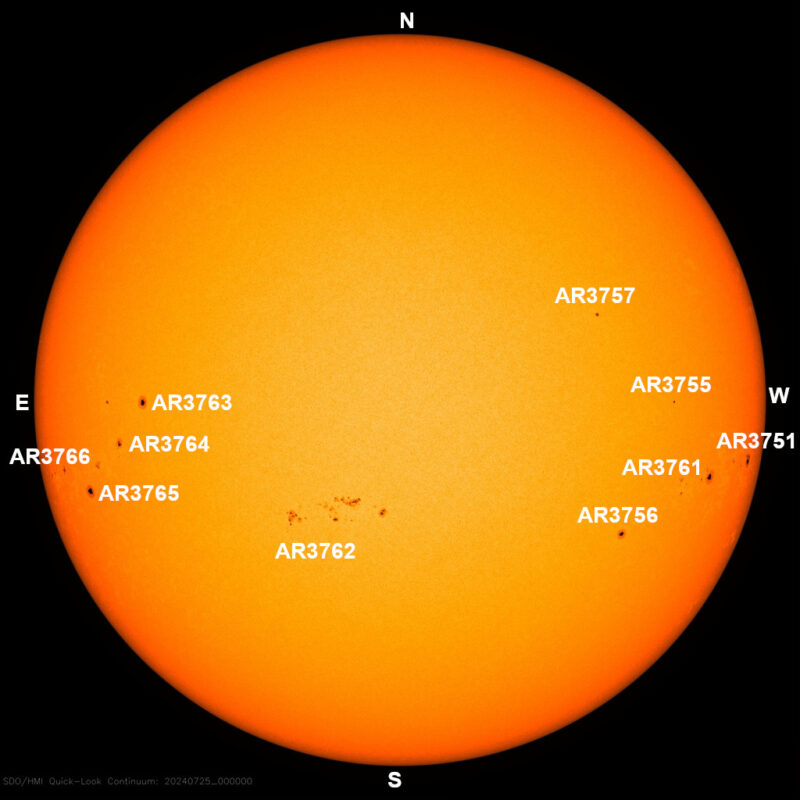


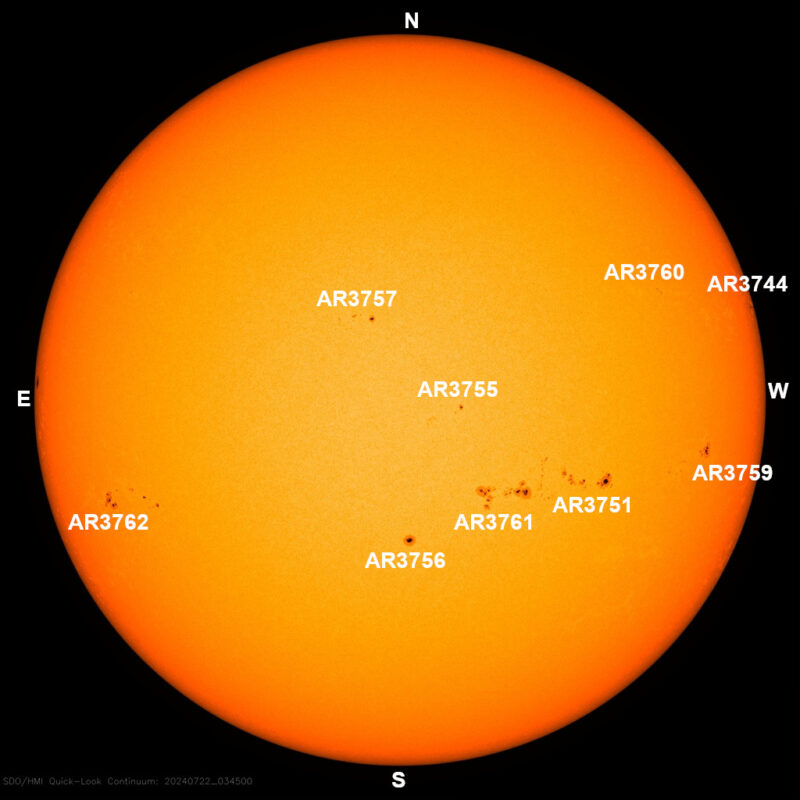


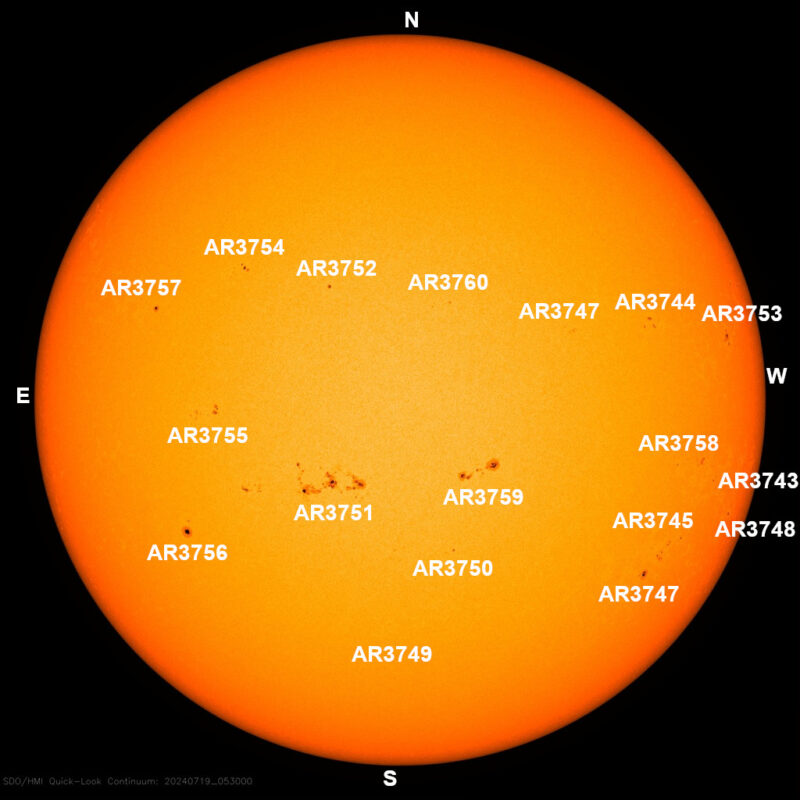
Sun images from our community
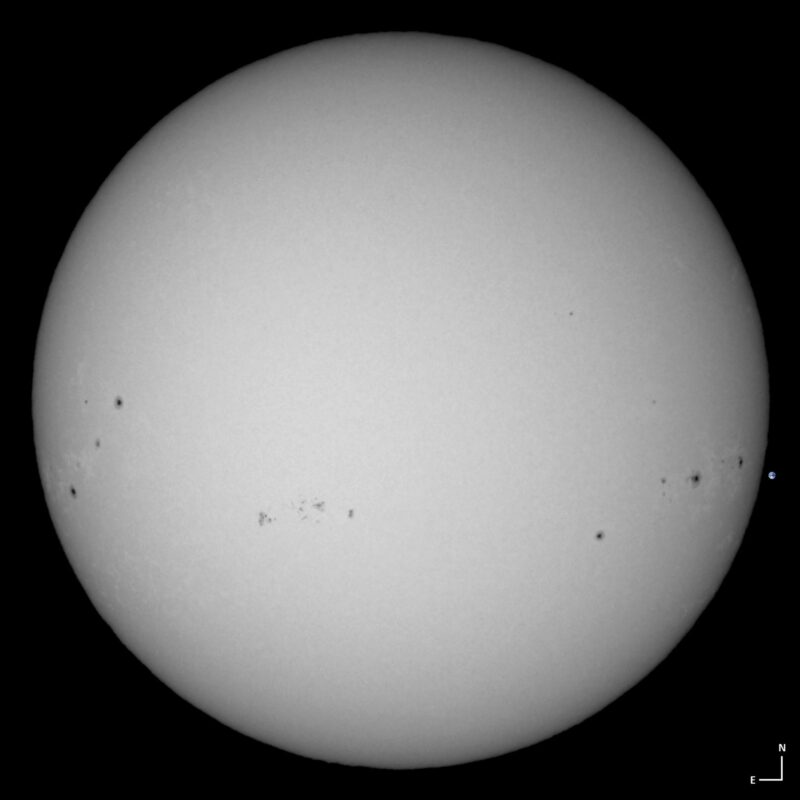
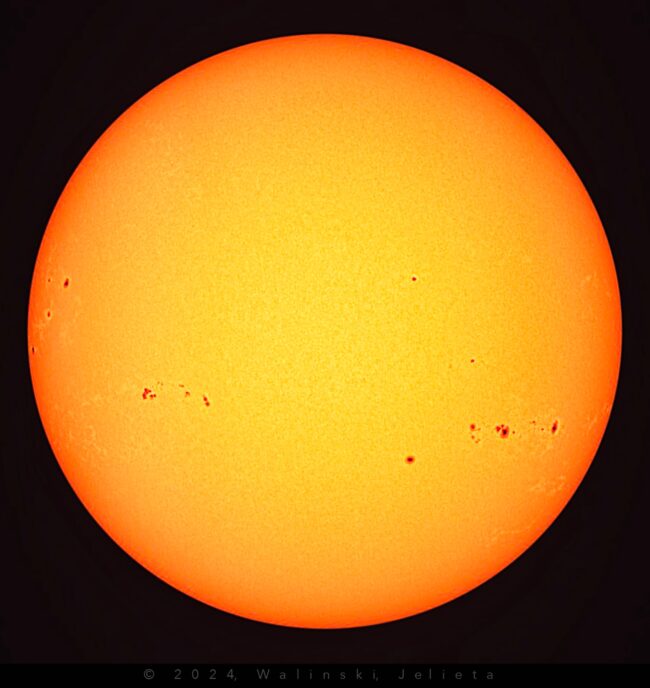

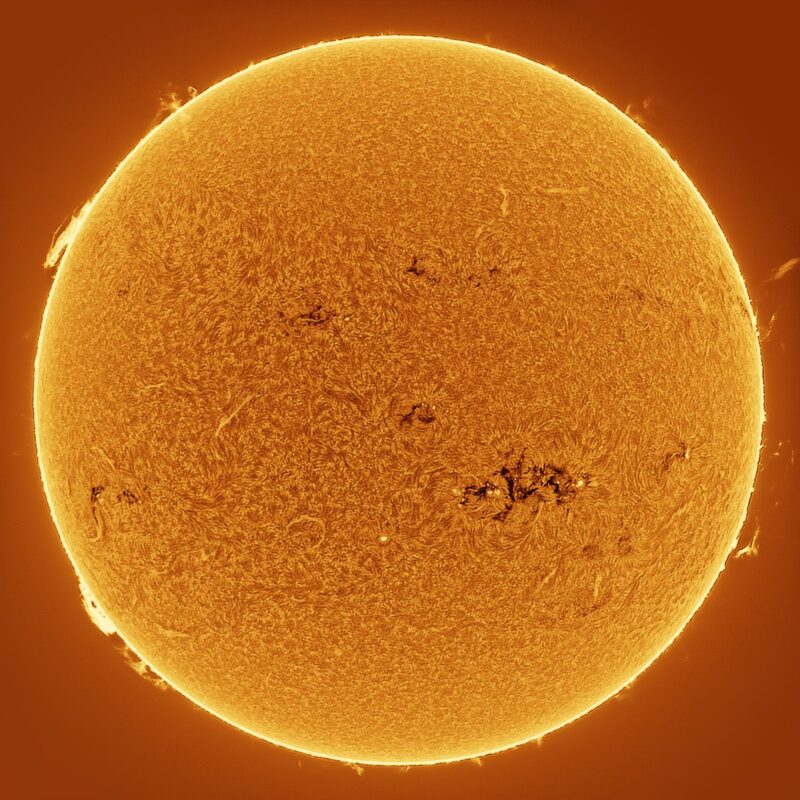
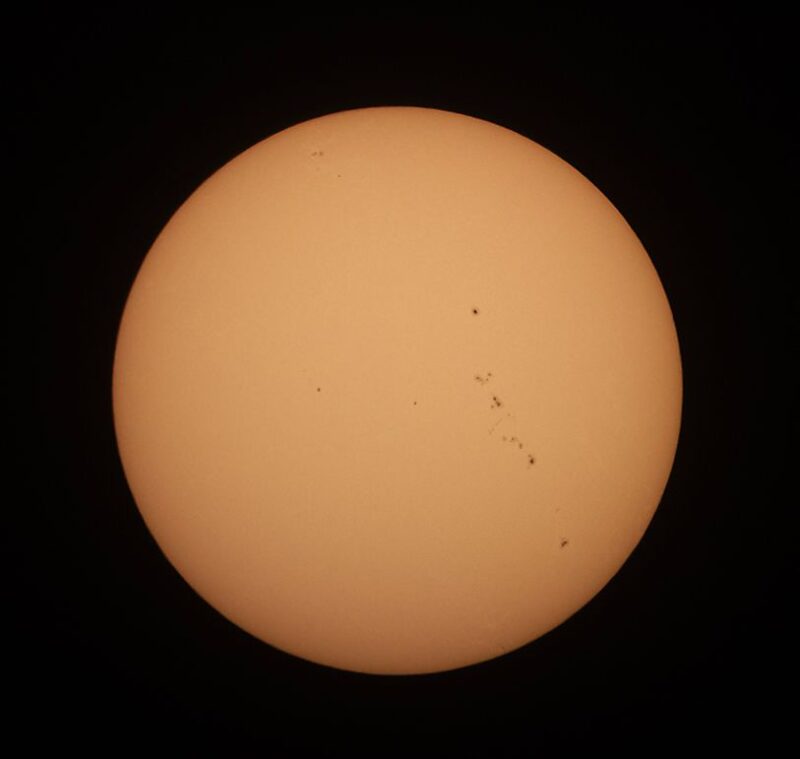
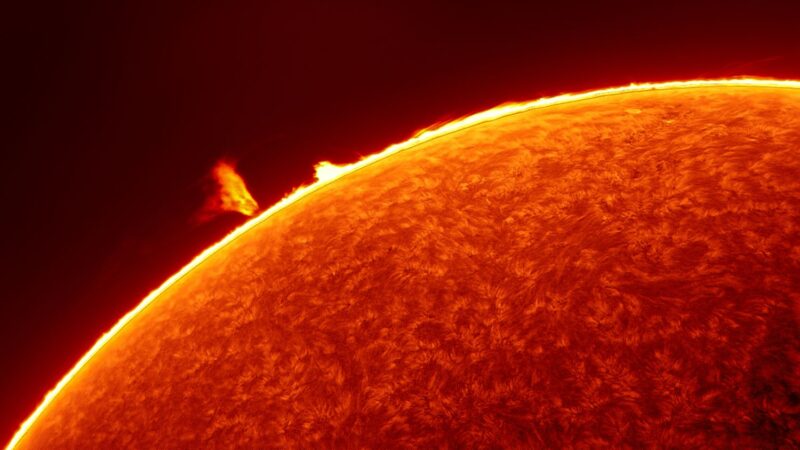
Are you a fan of sun images? We invite you all to send us your beautiful recent photos of sunspots and auroras. We love receiving them and sharing them! And to those of you who’ve already posted a photo to our community page, thank you.
Bottom Line: Sun news for July 26, 2024. Moderate activity continues with 2 M flares. A geomagnetic storm this morning should be followed by another overnight.











